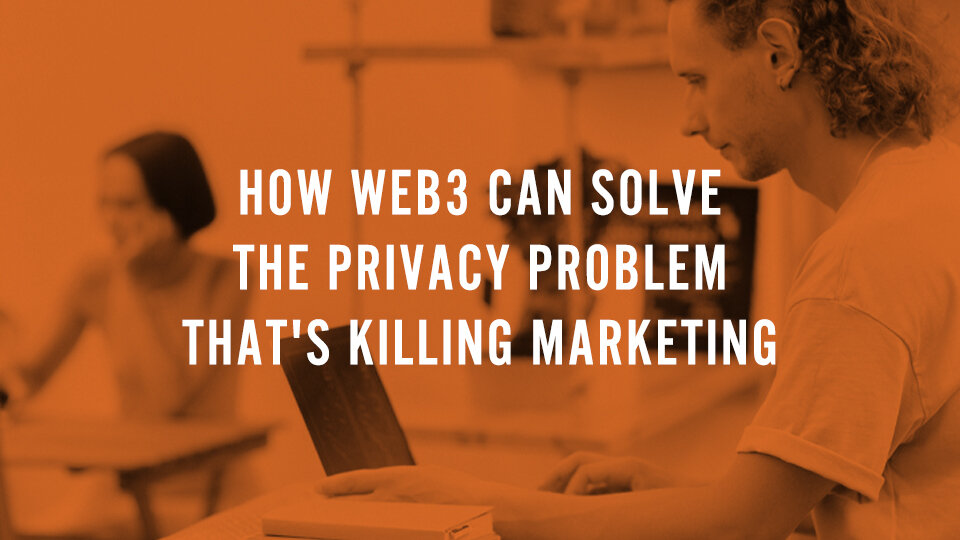How Web3 Can Solve The Privacy Problem That's Killing Marketing
By Maurilio Amorim
In March 2009, Meglena Kuneva, the European consumer protection commissioner, said something that is very famous, overused, and often misunderstood: “Personal data is the new oil of the internet and the new currency of the digital world.”
When Kuneva made this observation, Facebook was only five years old. And while Google had been around for over a decade, Twitter was only three. At least according to Ms. Kuneva, it was clear even in those early days that those who could mine and refine data (and turn them into actionable information) would become exceptionally powerful. She was right. But times have changed.
Our Data Is Not Ours
As we consider the ever-increasing volume and velocity of data today, we are acutely aware that our information is controlled by a handful of extremely powerful companies, including Apple, Microsoft, Alphabet (Google), Amazon and Meta Platforms (Facebook).
As a result, these organizations have amassed astronomically large amounts of data about each and every one of us.
As we live our daily lives, our profiles are constantly enhanced with data we willingly – but usually unknowingly – give away.
What’s the Problem?
On the surface, there doesn’t seem to be a problem with companies such as Apple, Microsoft, Google, Amazon and Facebook having access to our data.
They are publicly traded corporations that are subject to the rule of law, and for the most part, they use our data to incentivize us to purchase their goods and services. Advertiser-supported organizations say they are simply trying to put the right message in front of the right person in the right place at the right time.
Except… because they are de facto data monopolies, these companies now control who can market to whom.
This has become a very big problem.
Apple has imposed Apple Tracking Transparency (ATT) on the marketing world, and Google keeps threatening to end third-party cookie access in its Chrome browser. Ask Facebook how they feel about ATT.
More importantly, ask a small nonprofit or a local small business how effective their Facebook advertising has been since it was implemented.
Big tech’s cavalier attitude toward our data has inspired all kinds of government regulations such as GDPR, CCPA and the NY Shield Act, and there will certainly be more to come.
These rules and regulations have focused the public on data protection and privacy (which is a very good thing), but these very same rules impose even more restrictions on advertisers and marketers.
Satoshi Nakamoto’s Solution
Around the same time that Ms. Kuneva was busy thinking about data and oil metaphors, Satoshi Nakamoto identified and solved a very specific problem:
What is needed is an electronic payment system based on cryptographic proof instead of trust, allowing any two willing parties to transact directly with each other without the need for a trusted third party.
Transactions that are computationally impractical to reverse would protect sellers from fraud, and routine escrow mechanisms could easily be implemented to protect buyers.
The 2008 white paper Bitcoin: A Peer-to-Peer Electronic Cash System introduced us to bitcoin, the world of decentralized finance, and laid the technological foundation for Web3. It also laid the groundwork for the disruption of our centralized data overlords.
So how can the Blockchain help marketers in a time when personal information is becoming scarce?
Enter Personal SSI. SSI is a set of open digital identity standards that gives individuals control over the information they use to prove who they are. It can be used to exchange data between issuers, holders and verifiers without the involvement of any central authority.
You can think of your SSI as a non-transferable, non-fungible token (NFT) or smart contract that allows you to choose what data you wish to reveal and have them verified by anyone you authorize to view them on a public blockchain.
This Web3 technology has the potential to “flip the script” for marketers. Instead of collecting email addresses and hoping to tag users with some form of digital ID, a potential customer or donor could enter your funnel by allowing you to know their identity via their SSI.
This would allow you (the marketer) to follow their digital wallet and have access to the data the individual wanted you to have about them. With this subtle shift, it now becomes possible for you to create a system where both you (the marketer) and the user (potential customer) can both share in the value you create.
This takes the concept of building a community around your brand or leveraging your existing community to some exciting new places.
You would have the ability (and the opportunity) to store and exchange value, and you also would have a method of account.
A Web3 ecosystem will offer new ways to interact with your community and it will stand alone or easily be connected to your existing Web2 tools.
Thinking about Web3’s Future from a Marketer’s Perspective
This journey begins with some great new storytelling tools and ends with the very non-technical assembling of communities of passion, practice or interest around your brand.
You’ll need to learn how to use blockchain, smart contracts and NFTs to create value and utility for your communities, partners, customers or target audience.
But you’ve already mastered the most difficult part of this process – you understand how to identify and communicate the core principles of your brand.
Now, take what you already know and answer the following question: How can I deploy this new group of technologies to create an environment where both users and creators share in the value they create?














